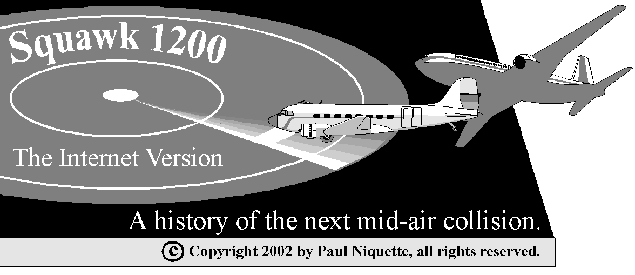

|
Chapter 14 Political Realities Headquarters for our division was located in Beverly Hills. My boss in New Jersey, Al Jackson, went along with my request and wangled me a trip out to the "Coast' (a term of distinction I learned while living in the East, meaning the Pacific Coast -- the Atlantic Seaboard being called the "Shore"). Spirits soaring, I booked an appointment with the general manager and hopped a jet. I admired Professor Joseph Manildi as much as any man I would ever meet. When I left for NAFEC a year earlier, Manildi was on top of the world -- founder of UCLA's engineering executive program, division vice president of a prosperous new aerospace company (TRW), urbane more than erudite, married to a glamourous woman, and accumulating a world-class record collection in his Beverly Hills home. Prof. Manildi had served on the Curtis Commission, which founded the FAA and initiated the airways modernization program. When I applied for the research spot at NAFEC, a taffy-pull occurred inside the company over whether I should be permitted to give up my current assignment to go on this low-margin venture with the Government. Joe Manildi weighed in on my side. Not surprising then, he responded warmly to my progress report on the man-machine simulator. At last, I broached the subject of expanding our statement-of-work to include development of the transponder and the requisite ground-based systems. Manildi's face darkened. "We need you back here," he said quietly. His answer stunned me. I protested at once. The altitude-reporting transponder was essential to aviation safety. I reeled off my evidence, raising my voice for emphasis. Manildi was unmoved. "Look, Joe," I said, "this project has everything going for it. Technically, you know transponders make sense." Joe nodded. He stood up from behind his desk and walked over to the window. I continued with my polemics. "The automation of track-while-scan has to be economically sound, too. Save one crash -- Christ, what price can you put on a mid-air! And there are human considerations. Take a trip with me up to the radar room at Idlewild. You will see horrendous demands on humans, pressure for perfection, leaving no margin for error..." Manildi made no reply. "McLaughlin says air traffic control as it exists today is statistically charmed," I said, gradually escalating into full rant mode. "Makes you want to stay on the ground! Every day without mid-air collisions is a credit to the superhuman performance of a few dedicated people with uncommon skills." I pounded Manildi's desk. "It's sure as hell not those creaking radars that -- " Joe turned toward me holding up three fingers. He spoke with deliberate finality. "However technically sound your proposal, winning the contract is doubtful, inasmuch as the project does not match the skills of our company. Secondly, investment of our limited economic resources will return more elsewhere." Dr. Manildi tried to smile. "Let me remind you: included among your 'human considerations' are 'political realities' -- " "Collisions in the sky are realities, too, damn it!" I blurted. Dr. Manildi sighed. "What you say may be true. But I have a company to think about." Somehow I knew his words did not match his feelings. Many years would pass before I might apprehend that painful aspect of management. The buzzer on his intercom brought the meeting to a close. "Give my best to the other guys on the team," he said while shaking my hand at the door. It was the last time I saw Joe Manildi. I learned later that he died by his own hand. |
| Home Page | Table of Contents | Chapter 15 | Contact Author |
Epilog
| In 2002, on the occasion of a reunion of the NAFEC research team that he led, Albert S. Jackson [author of Analog Computation, McGraw Hill, 1960] wrote... |
It has been 40 years since we were together at NAFEC -- doing very important work for the country! We were a great team and we did great work for the FAA. |